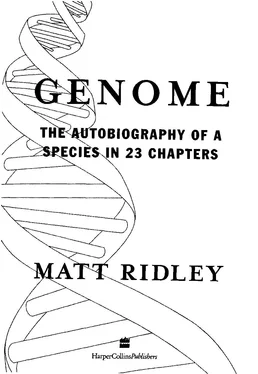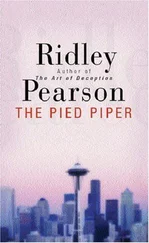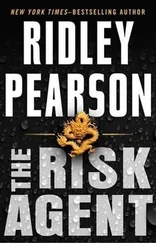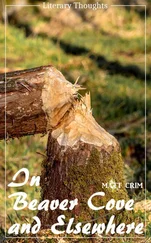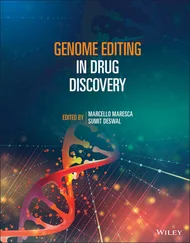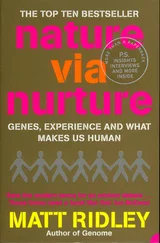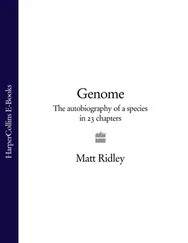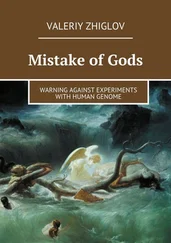Genome - Matt Ridley
Здесь есть возможность читать онлайн «Genome - Matt Ridley» — ознакомительный отрывок электронной книги совершенно бесплатно, а после прочтения отрывка купить полную версию. В некоторых случаях можно слушать аудио, скачать через торрент в формате fb2 и присутствует краткое содержание. Жанр: Старинная литература, на английском языке. Описание произведения, (предисловие) а так же отзывы посетителей доступны на портале библиотеки ЛибКат.
- Название:Matt Ridley
- Автор:
- Жанр:
- Год:неизвестен
- ISBN:нет данных
- Рейтинг книги:5 / 5. Голосов: 1
-
Избранное:Добавить в избранное
- Отзывы:
-
Ваша оценка:
- 100
- 1
- 2
- 3
- 4
- 5
Matt Ridley: краткое содержание, описание и аннотация
Предлагаем к чтению аннотацию, описание, краткое содержание или предисловие (зависит от того, что написал сам автор книги «Matt Ridley»). Если вы не нашли необходимую информацию о книге — напишите в комментариях, мы постараемся отыскать её.
Matt Ridley — читать онлайн ознакомительный отрывок
Ниже представлен текст книги, разбитый по страницам. Система сохранения места последней прочитанной страницы, позволяет с удобством читать онлайн бесплатно книгу «Matt Ridley», без необходимости каждый раз заново искать на чём Вы остановились. Поставьте закладку, и сможете в любой момент перейти на страницу, на которой закончили чтение.
Интервал:
Закладка:
The lack of telomerase seems to be the principal reason that cells grow old and die, but is it the principal reason bodies grow old and 2 0 0 G E N O M E
die? There is some good evidence in favour: cells in the walls of arteries generally have shorter telomeres than cells in the walls of veins. This reflects the harder lives of arterial walls, which are subject to more stress and strain because arterial blood is under higher pressure. They have to expand and contract with every pulse beat, so they suffer more damage and need more repair. Repair involves cell copying, which uses up the ends of telomeres. The cells start to age, which is why we die from hardened arteries, not from hardened veins.7
The ageing of the brain cannot be explained so easily, because brain cells do not replace themselves during life. Yet this is not fatal to the telomere theory: the brain's support cells, called glial cells, do indeed duplicate themselves; their telomeres do, therefore, probably shrink. However, there are very few experts who now believe that ageing is, chiefly, the accumulation of senescent cells, cells with abridged telomeres. Most of the things we associate with ageing -
cancer, muscle weakness, tendon stiffness, hair greyness, changes in skin elasticity - have nothing to do with cells failing to duplicate themselves. In the case of cancer, the problem is that cells are copying themselves all too enthusiastically.
Moreover, there are huge differences between different species of animal in the rate at which they age. On the whole, bigger animals, such as elephants, live longer than smaller animals, which is at first sight puzzling given that it takes more cell doublings to make an elephant than a mouse — if cell doublings lead to senescent cells.
And lethargic, slow-lived animals such as tortoises and sloths are long-lived for their size. This led to a neat generalisation, which is so tidy it ought to be true and probably would be if physicists ran the world: every animal has roughly the same number of heartbeats per lifetime. An elephant lives longer than a mouse, but its pulse rate is so much slower that, measured in heartbeats, they both live lives of the same length.
The trouble is, there are damning exceptions to the rule: notably bats and birds. Tiny bats can live for at least thirty years, during almost all of which they eat, breathe and pump blood at a frantic I M M O R T A L I T Y 2 0 I
rate — and this applies even in species that do not hibernate. Birds —
whose blood is several degrees hotter, whose blood sugar is at least twice as concentrated and whose oxygen consumption is far faster than in most mammals - generally live long lives. There is a famous pair of photographs of the Scottish ornithologist George Dunnet holding the same wild fulmar petrel in 1950 and 1992. The fulmar looks exactly the same in the two pictures; Professor Dunnet doesn't.
Fortunately, where the biochemists and medics have failed to explain ageing patterns, the evolutionists have come to the rescue.
J. B. S. Haldane, Peter Medawar and George Williams separately put together the most satisfying account of the ageing process.
Each species, it seems, comes equipped with a program of planned obsolescence chosen to suit its expected life-span and the age at which it is likely to have finished breeding. Natural selection carefully weeds out all genes that might allow damage to the body before or during reproduction. It does so by killing or lowering the reproductive success of all individuals that express such genes in youth.
All the rest reproduce. But natural selection cannot weed out genes that damage the body in post-reproductive old age, because there is no reproduction of the successful in old age. Take Dunnet's fulmar, for instance. The reason it lives far longer than a mouse is because in the life of the fulmar there is no equivalent of the cat and the owl: no natural predators. A mouse is unlikely to make it past three years of age, so genes that damage four-year-old mouse bodies are under virtually no selection to die out. Fulmars are very likely to be around to breed at twenty, so genes that damage twenty-year-old fulmar bodies are still being ruthlessly weeded out.
Evidence for this theory comes from a natural experiment studied by Steven Austad on an island called Sapelo, which lies about five miles off the coast of Georgia in the United States. Sapelo contains a population of Virginia opossums that has been isolated for 10,000
years. Opossums, like many marsupials, age very rapidly. By the age of two years, opossums are generally dead from old age - the victims of cataracts, arthritis, bare skin and parasites. But that hardly matters because by two they have generally been hit by a truck, a coyote, 2 0 2 G E N O M E
an owl or some other natural enemy. On Sapelo, reasoned Austad, where many predators are absent, they would live longer and so —
exposed for the first time to selection for better health after two years of age - their bodies would deteriorate less rapidly. They would age more slowly. This proved an accurate prediction. On Sapelo, Austad found, the opossums not only lived much longer, but aged more slowly. They were healthy enough to breed successfully in their second year - rare on the mainland — and their tendons showed less stiffness than those in mainland opossums.8
The evolutionary theory of ageing explains all the cross-species trends in a satisfying way. It explains why slow-ageing species tend to be large (elephants), or well protected (tortoises, porcupines), or relatively free from natural predators (bats, seabirds). In each case, because the death rate from accidents or predation is low, so the selective pressure is high for versions of genes that prolong health into later life.
Human beings, of course, have for several million years been large, well protected by weaponry (even chimps can chase leopards off with sticks) and have few natural predators. So we age slowly -
and perhaps more slowly as the eras pass. Our infant mortality rate in a state of nature - of perhaps fifty per cent before the age of five — would be shockingly high by modern, western standards, but is actually low by the standards of other animals. Our Stone-Age ancestors began breeding at about twenty, continued until about thirty-five and looked after their children for about twenty years, so by about fifty-five they could die without damaging their reproductive success. Little wonder that at some time between fifty-five and seventy-five most of us gradually start to go grey, stiff, weak, creaky and deaf. All our systems begin to break down at once, as in the old story of the Detroit car maker who employed somebody to go around breakers' yards finding out which parts of cars did not break down, so that those bits could in future be made to a lower specification.
Natural selection has designed all parts of our bodies to last just long enough to see our children into independence, no more.
Natural selection has built our telomeres of such a length that I M M O R T A L I T Y 2 0 3
they can survive at most seventy-five to ninety years of wear, tear and repair. It is not yet known for certain, but it seems likely that natural selection may have given fulmars and tortoises somewhat longer telomeres, and Virginia opossums much shorter ones. Perhaps even the individual differences in longevity between one human being and another also indicate differences in telomere length. Certainly, there is great variety in telomere length between different people, from about 7,000 D N A 'letters' to about 10,000 per chromosome end. And telomere length is strongly inherited, as is longevity. People from long-lived families, in which members regularly reach ninety, may have longer telomeres, that take longer to fray, than the rest of us. Jeanne Calment, the French woman from Arles who in February 1995 became the first human being with a birth certificate to celebrate her 120th birthday, may have had many more repeats of the message T T A G G G . She eventually died at 122. Her brother lived to ninety-seven.9
Читать дальшеИнтервал:
Закладка:
Похожие книги на «Matt Ridley»
Представляем Вашему вниманию похожие книги на «Matt Ridley» списком для выбора. Мы отобрали схожую по названию и смыслу литературу в надежде предоставить читателям больше вариантов отыскать новые, интересные, ещё непрочитанные произведения.
Обсуждение, отзывы о книге «Matt Ridley» и просто собственные мнения читателей. Оставьте ваши комментарии, напишите, что Вы думаете о произведении, его смысле или главных героях. Укажите что конкретно понравилось, а что нет, и почему Вы так считаете.
